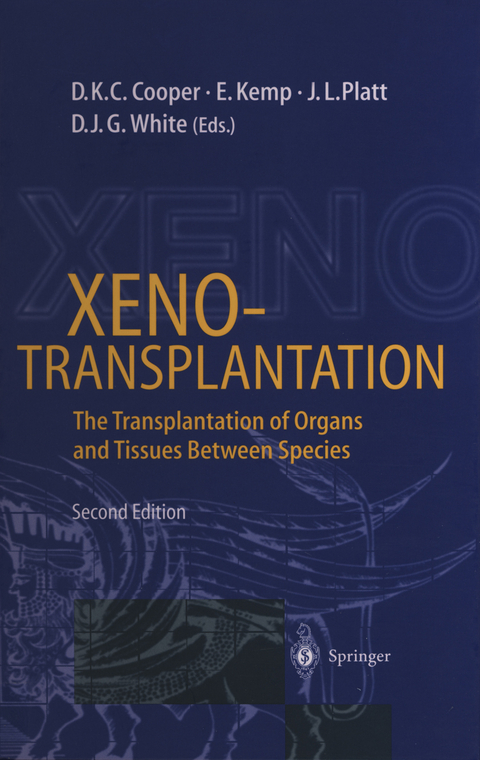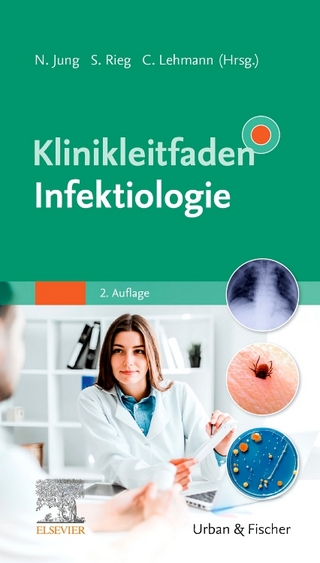
Xenotransplantation
Springer Berlin (Verlag)
978-3-642-64460-3 (ISBN)
I Introduction.- 1 Introduction.- II Immunobiology of Xenograft Rejection.- 2 Hyperacute Xenograft Rejection.- 3 Role of Natural Antibody-Antigen Interactions in Xenotransplantation.- 4 Major Carbohydrate Xenotransplantation Antigens.- 5 Natural Antibody Polymorphism and Anti-Gal?1-3Gal Antibodies.- 6 Role of Complement in Xenograft Rejection.- 7 Genetic Control of Humoral Responses to Xenografts.- 8 Mechanisms of Delayed Xenograft Rejection.- 9 Anti-?galactosyl (Anti-Gal) Antibody Damage Beyond Hyperacute Rejection.- 10 Human Natural Killer Cells and Natural Antibodies Recognize Overlapping Molecular Structures on Discordant Xenogeneic Endothelium.- 11 Hemostasis in Xenotransplantation.- 12 Mechanisms of Cellular Xenograft Rejection.- 13 Human T Cell Response to Porcine Tissues.- 14 Cellular Interaction in Discordant Xenotransplantation.- 15 Immunoprivileged Sites for Alio- and Xenotransplantation.- 16 Immunobiology of Xenotransplantation in Rodents.- III Pathology of Xenograft Rejection.- 17 Histopathology of Kidney Xenograft Rejection.- 18 Histopathology of Cardiac Xenograft Rejection.- 19 Mechanism of Discordant Cardiac Xenograft Rejection - An Alternative Point of View Based on Ultrastructural Observations.- 20 Histopathology of Liver Xenotransplantation in the Nonhuman Primate.- 21 Immunopathology of Discordant Xenograft Rejection.- IV Experimental Xenotransplantation Between Closely Related Species.- 22 Experimental Concordant Kidney Xenotransplantation in Primates.- 23 Experimental Concordant Liver Xenotransplantation in Nonhuman Primates.- 24 Use of Tacrolimus (FK506) and Antimetabolites as Immunosuppressants for Xenotransplantation Across Closely Related Rodent Species.- V Experimental Xenotransplantation Between Widely Disparate Species.- 25 Roles ofAnti-?Gal Antibody and Oligosaccharide Therapy in Xenotransplantation.- 26 Removal of Natural Antibodies by Immunoadsorption: Results of Experimental Studies.- 27 Neutralization of the Cytotoxic Effect of Anti-?Gal Antibodies with Monoclonal Anti-idiotypic Antibodies.- 28 Designer Tissues and Organs: Mouse to Man.- 29 Use of Anti-? Monoclonal Antibodies in Xenotransplantation: A Potential Approach To Overcome Vascular Rejection.- 30 Use of Intravenous Immunoglobulin as a Therapeutic Approach To Prevent Rejection Between Widely Disparate Species.- 31 Control of Complement-Mediated Tissue Damage by ?-Globulin: Application in Xenotransplantation.- 32 Prolongation of Discordant Xenograft Survival by Cobra Venom Factor.- 33 Therapeutic Effect of Soluble Complement Receptor Type I in Xenotransplantation.- 34 Immunobiology of Pig-to-Baboon Lung Xenotransplantation.- 35 Experimental Lung Xenografting: General Considerations.- 36 Newborn Pig-to-Baboon Cardiac Xenotransplantation: A Model of Delayed Xenograft Rejection.- 37 Total Lymphoid Irradiation: Immunosuppressive Therapy for Xenotransplantation.- 38 Xenogeneic Tolerance Through Hematopoietic Cell and Thymic Transplantation.- 39 Chimerism and Tolerance as an Approach to Xenotransplantation.- VI Experimental Pancreatic Islet Cell Xenotransplantation.- 40 Introduction.- 41 Isolated Pancreatic Islet Xenografting.- 42 Recent Approaches to the Isolation of Adult Porcine Islets of Langerhans.- 43 Xenotransplantation of Encapsulated Pancreatic Islets.- VII Pharmacologic Immunosuppression in Xenotransplantation.- 44 Pharmacologic Immunosuppressants in Xenotransplantation.- 45 Use of Brequinar Sodium To Prevent Xenograft Rejection.- 46 Leflunomide and the Malinonitriloamides in Xenotransplantation.- VIII Genetic Engineering ofthe Xenograft Donor.- 47 Use of Transgenic Animals as Xenotransplant Donors.- 48 Engineering of Xenografts To Provide Organs for Human Transplantation.- 49 Effect of Transgenic Expression of Human Decay Accelerating Factor on the Inhibition of Hyperacute Rejection of Pig Organs.- 50 Overcoming the Anti-Gal?(1-3)Gal Reaction To Avoid Hyperacute Rejection: Molecular Genetic Approaches.- 51 Gal?1-3Gal Xenoepitope: Donor-Targeted Genetic Strategies.- IX Aspects of Xenotransplantation in Humans.- 52 Evolutionary obstacles to xenotransplantation.- 53 Xenotransplantation and Infectious Diseases.- 54 Nucleic Acid-Based Discovery Techniques for Potential Xenozoonotic Pathogens.- 55 Comments on Ethics in Human Xenotransplantation.- X Clinical Experience.- 56 Clinical Xenotransplantation - A Brief Review of the World Experience.- 57 Extracorporeal Xenogeneic Liver Perfusion for the Treatment of Hepatic Failure.- 58 Baboon Liver Transplantation in Humans: Clinical Experience and Principles Learned.- 59 Clinical Islet Xenotransplantation.- 60 Conceptual Scientific Development of the Xenotransplantation Project in Goteborg.
"The new, revised and extended second edition provides a complete overview of this promising and exciting field. This work uniquely puts into perspective the essential features of xenotransplantation and its, as yet, unresolved problems." Transplant International
| Erscheint lt. Verlag | 7.1.2012 |
|---|---|
| Zusatzinfo | XXXIV, 854 p. 12 illus. in color. |
| Verlagsort | Berlin |
| Sprache | englisch |
| Maße | 155 x 235 mm |
| Gewicht | 1322 g |
| Themenwelt | Medizin / Pharmazie ► Medizinische Fachgebiete ► Chirurgie |
| Studium ► Querschnittsbereiche ► Infektiologie / Immunologie | |
| Schlagworte | Experimental Surgery • Experimentelle Chirurgie • Genetic Engineering • glycobiology • Heterografting • Heterotransplantation • Immunbiologie • Immunobiology • Organtransplantation • Organ Transplantation • Transplantation • Transplantation Immunology • Transplantationsimmunologie • Xenogr • Xenografting • Xenotransplantation |
| ISBN-10 | 3-642-64460-0 / 3642644600 |
| ISBN-13 | 978-3-642-64460-3 / 9783642644603 |
| Zustand | Neuware |
| Haben Sie eine Frage zum Produkt? |
aus dem Bereich


